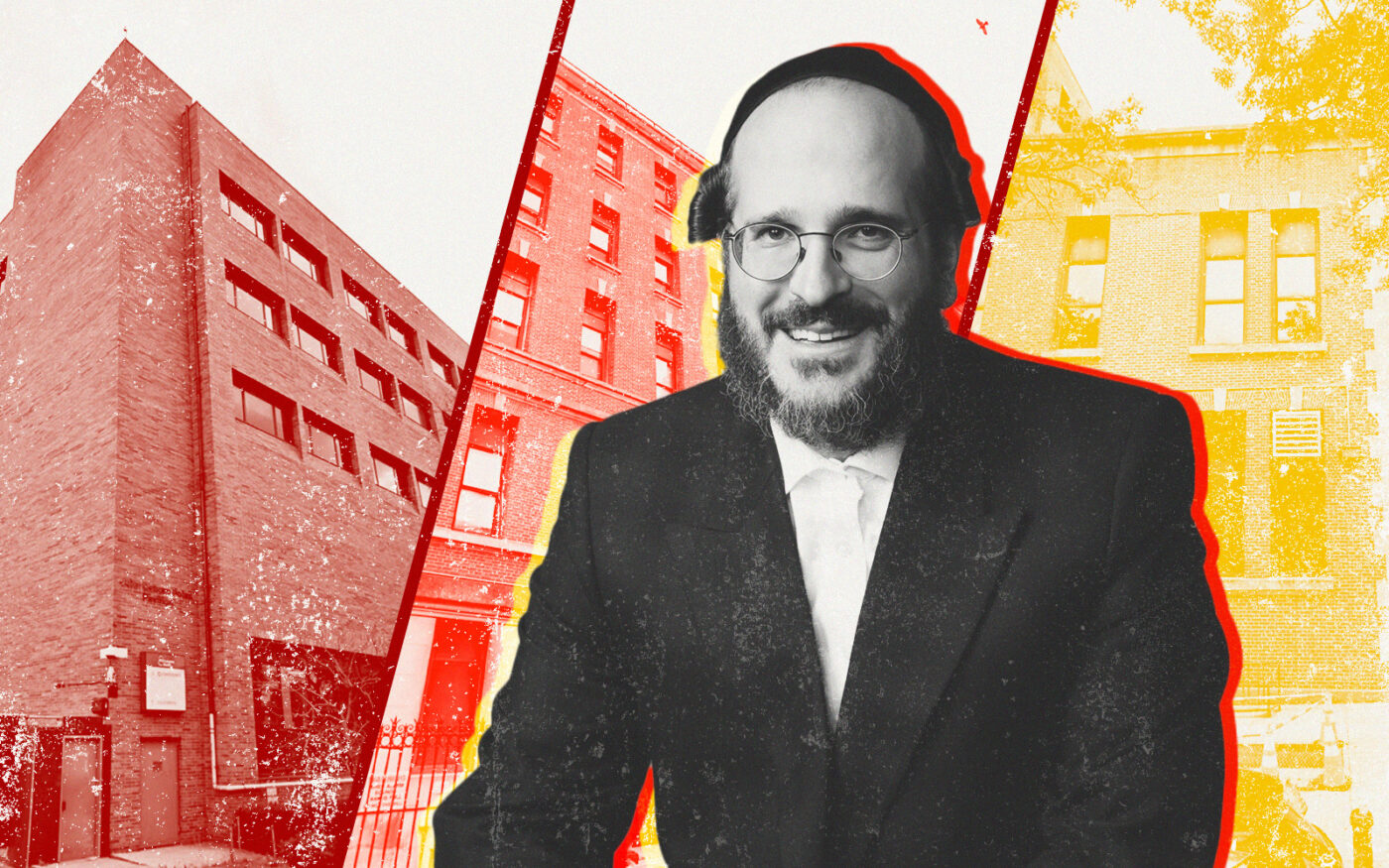 Judge tells Fortis, bank to end leaning-tower dispute
Judge tells Fortis, bank to end leaning-tower dispute
Trending
SUNY: Fortis failed to close on $240M Brooklyn purchase
Lawsuit reveals bizarre details of dispute at former hospital site

Fortis Property Group had grand ambitions for the former Long Island College Hospital site after winning the contentious bidding nearly a decade ago.
Fortis, led by the father-son team of Louis and Joel Kestenbaum, planned six residential buildings, eight townhouses and up to 500 units to the Cobble Hill parcels, along with a medical center. Their $1 billion complex, River Park, was expected to be one of Brooklyn’s priciest developments.
But Fortis has struggled to stay above water at River Park. Last year, it sold two of its condo tower sites to its lender, Madison Realty Capital, which was moving to foreclose on them.
Now, another part of the deal has hit a snag, jeopardizing a major piece of the project.
The State University of New York agreed in 2014 to sell the Cobble Hill site to Fortis for $240 million on the condition that the project include a medical facility, which NYU would build. Fortis was to pay in two phases — later amended to three — and gain title to various parcels as it did.
The third closing was scheduled twice but never consummated, SUNY now alleges in a lawsuit. At the first, on July 9, Fortis sent a lawyer but did not pay what it had agreed to, according to SUNY, so the two sides rescheduled for Aug. 8 — and the same thing happened.
A Fortis spokesperson said it was SUNY that failed to satisfy conditions required to close.
SUNY has terminated the deal and is seeking $8 million that it claims Fortis owes for failing to close. It also intends to keep Fortis’ $7 million deposit.
But the deal is not dead — far from it. Rather, the two sides are arguing over money.
Fortis argues that NYU took nine years, rather than the expected two, to build the medical facility, during which time Fortis paid operating expenses for an existing medical facility that NYU vacated when the new one was finally finished.
Fortis said SUNY had promised to reimburse it for those expenses, which amount to tens of millions of dollars, but now refuses to. It is not clear why the two closings were scheduled without that issue having been resolved.
The Fortis spokesperson also said the developer expected to lease the medical facility long-term to NYU, but that NYU backed out of its commitment. NYU declined to comment.
Both sides have some leverage. Fortis knows SUNY would rather resolve the dispute than find another developer to finish the project. SUNY has Fortis’ deposit in hand, plus a potential judgment for $8 million if it wins the lawsuit.
Fortis risks losing the title of two development parcels, which could be turned into residential buildings in one of Brooklyn’s priciest neighborhoods. The two parcels were valued at a combined $83 million in 2015 if the buildings are completed.
“The question for SUNY: Why does it want to waste more taxpayer dollars and delay the project even longer?“ said Fortis’s attorney, George Carpinello of Boies Schiller Flexner. “SUNY’s actions are not right and they are not fair, especially for the community. This is why we are where we are — in court instead of building much needed housing in Brooklyn.”
SUNY decided to close Long Island College Hospital after it bled money for years. Bill de Blasio was arrested during his 2013 mayoral campaign for protesting the hospital’s closure, which became a cause celebre for the Brownstone Brooklyn community.
But once elected mayor, de Blasio bowed to financial reality. Neither de Blasio nor the Cuomo administration wanted to keep subsidizing a money-losing hospital on what would be a lucrative residential development site.
A request for proposals was issued and Fortis was selected, beating out Don Peebles. Then-Manhattan U.S. Attorney Preet Bharara reportedly investigated de Blasio’s role in the deal, but did not bring charges.
A rezoning battle then played out. Then-Council member Brad Lander demanded Fortis provide lots of affordable housing, a school, and other community benefits. But he asked for more than Fortis was willing to give, and the developer resolved to build smaller, market-rate condominium buildings, which it could do without Lander’s sign-off.
It seemed like the easiest route for Fortis, yet the project ran into problems anyway.
Last year, Madison Realty Capital initiated a Uniform Commercial Code foreclosure on two development sites, 1 and 2 River Park, where Fortis planned to develop 48-unit and 102-unit apartment buildings. Fortis avoided foreclosure by selling the properties to Madison.
Fortis still owns 5 River Park at 347 Henry Street. About three-quarters of the project’s 25 units have been sold, according to its website. Even that building had issues, as neighbors complained it produced a shrill noise akin to fingernails on a blackboard. Fortis traced the problem to wind hitting the luxury building’s balcony railings.
That was the least of the developer’s worries. Its planned 60-story condo tower at 161 Maiden Lane in the Financial District has sat unfinished for years because in 2018 it was found to be tilting north. The resulting dispute between Fortis, its lender and its contractor remains stuck in litigation.
The firm has had success with its 76-unit Olympia Dumbo, which could become the borough’s most expensive condominium on a per-square-foot basis. A number of apartments with eight-figure price tags have sold, including a pad asking $13 million to Nets player Ben Simmons.
Last year, Jonathan Landau stepped down as Fortis’ CEO to start his own firm in Miami. Fortis announced a corporate restructuring and Joel Kestenbaum stepped in to succeed Landau.
This story has been updated with comments from a Fortis spokesperson.
Read more
 Judge tells Fortis, bank to end leaning-tower dispute
Judge tells Fortis, bank to end leaning-tower dispute
 The Fortis of solitude
The Fortis of solitude
 Fortis faces foreclosure on large Cobble Hill condo project
Fortis faces foreclosure on large Cobble Hill condo project




